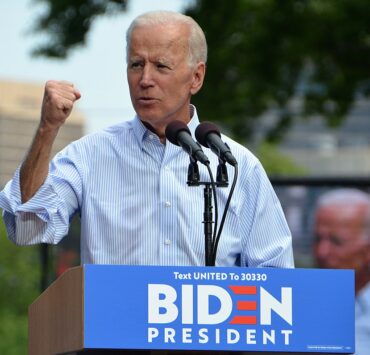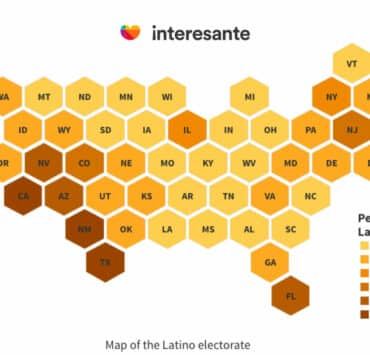Escritora de cultura, política y relaciones internacionales.
With November’s general elections on the horizon amid an environment of national uncertainty, many voters are wondering how they can get involved in the political process. Below is a step-by-step guide for everyday online users to voice their thoughts and make their mark on this crucial campaign cycle.
Last week, I wrote about how presumptive Democratic presidential candidate Joe Biden can attract the youth to vote for the November election. One such strategy was to encourage surrogates and followers to promote Joe Biden on their own social media accounts. But how should the average social media user go about creating popular, effective content for Biden or, indeed, any other candidate? In the following paragraphs, I break down the process into several key parts:
Part 1: Getting Started
Consider your desired message type.
Do you want to highlight a candidate’s specific policy plan? Share a personal testimonial? Each type of message requires different research and prep. For example, a policy plan review will require skimming recent news articles and the candidate’s website while a testimonial video would involve writing, rehearsing, and filming a set script. When deciding on a message type, consider your communications strengths, and play to them.
Decide which social media platform(s) to use.
Some platforms are better for certain types of messages than others. For example, while Instagram is preferred for more visual posts, LinkedIn is more ideal for longer, text-based pieces. For a full rundown of different platforms, check out this helpful guide.



Explore previous examples.
Still, stuck on what you want to do? Try exploring what other social media influencers have done. This can even include people who promoted other presidential campaigns; Bernie Sanders and Andrew Yang, in particular, benefited from tech-savvy followers.
Part 2: Researching
Collect your facts and data.
Once you’ve decided on your angle, make sure to gather your facts and support from reputable sources. Read up on your candidate’s campaign page and the latest political news. If you’re focusing on a particular policy issue, check for relevant updates from both your candidate and other leading lawmakers. For Joe Biden, in particular, his campaign website and this NY Times profile page are good places to start.
Keep tabs on the candidate and their campaign.
Even if your posts are less policy-based, it’s always good to monitor the latest developments in a race. There’s always a chance your candidate will make a big announcement or take a stance that affects your intended message. Regularly check reputable sources like The New York Times and Politico, and like or follow the candidate on social media to see their latest news and content.
Part 3: Crafting your Message: Form and Content
Format
After reviewing your research, start outlining how you want to present your message on social media. While there are many ways to share information, here are a few of the most popular formats:
- Text paragraph. There’s nothing wrong with using prose, particularly if you’re planning to post on wordier platforms like LinkedIn or Facebook. Draft a few sentences and see how your ideas come across. If you’re writing a longer post, make sure every word counts; you don’t want to lose your audience. And be sure to proofread for spelling and grammar errors before hitting “Publish.”
- Bulleted list: Remember, online audiences love bullet points and lists, so even if the bulk of your text is comprised of full sentences, it might be a good idea to include a list here or there to break up space.
- Testimonials (Video or Text) Testimonials are essentially a letter of recommendation, often a personal story that explains why YOU support a particular candidate. In written form, they could include a few lines about your experience mixed with some images; in video form, they’d be a short clip of you speaking to the camera, explaining your background and rationale for support. Testimonials can be a powerful tool to connect to other peers.
- Q&A: Many political candidates use the question and answer strategy where they will take questions from voters (usually about their policies or background) and answer them over social media. You can either send your candidate a question by posting it on social media (who knows, he/she just might answer!) or ask and answer your own rhetorical question. An example of the latter could be:
- Q: How will Joe Biden address rising student loan debt as president?
- A: Joe Biden has announced a plan to forgive student loans for low/middle-income graduates of public universities and HBCUs, among other steps.
Question and answers are a succinct and clear-cut way to demonstrate a candidate’s policy stance.
Visual content, i.e. graphs and images.
While photos are always a good way to catch people’s eye, don’t underestimate the power of a good graph, either. Graphs can explain complex issues in the fraction of the time it takes to read a paragraph. You can make one yourself with Excel or repost from a reputable source.
Trump thinks wearing a mask makes him look like an idiot.
— Chip Franklin.com (@chipfranklin) July 1, 2020
I think this chart makes him look like an idiot. pic.twitter.com/1vDtjOxelB
Short clips of the candidate.
With our 24-hour news cycle, there are plenty of clips of candidates from virtual events or in past debates or town halls. If you find a worthy clip of a candidate explaining their policies or having a nice interaction with a voter, feel free to shine a spotlight.
Content
Now we’ve covered the message format, let’s move on to an equally important element: content. Here are a few tips about crafting the best language for your message.
Positivity sells.
While opponent-bashing is always tempting, remember that positive campaigning plays a crucial role in attracting voters to a candidate in the first place. In the case of the 2020 presidential election, many voters are already dissatisfied with President Trump but still want to know why they should support Joe Biden. So don’t be afraid to sprinkle some positivity into your messaging; after all, studies have shown effectiveness in political elections.
Tell a story.
Jill was a proud Republican until Donald Trump's take over of the party forced her out. Now, she is proudly supporting #JoeBiden2020
— Conscientious Iceman🧊 (@Connecticut3Bs) July 20, 2020
"I think that Trump is the worst thing that has ever happened to this country. He is an embarrassment." pic.twitter.com/n4zRS3vW0E
Statistics can be important in conveying research, but often, a story has greater power to pull at the heartstrings and change someone’s mind. People want to view things that resonate with them, and your personal story might have a bigger impact than you imagine. So if you have a personal anecdote behind your endorsement and feel comfortable sharing it, do it. Story-telling is a powerful tool to connect one voter to another.
Stress urgency and a call to action.
Have you ever seen those “limited time only” commercials that warn you a product will soon run out? As cheesy as it sounds, those tactics actually work in marketing, and they can certainly succeed in politics, too. Here, instead of risking sold-out shoes, the danger in supporting or not supporting a politician is that a certain policy will (or will not) be implemented or a population will be left behind. Urgency messages can challenge the status quo and provoke constituents into action.
Issue a clear call to action.
In addition to informing your audience of a new policy or candidate, make sure to tell them what to do with this information. Do you want them to vote? Donate? Tell all their friends? Either way, issue clear mandates into your call to action.
Donald Trump is going to throw an absolute fit when he finds out how many people have signed up to watch the star studded @JoeBiden livestream this Sunday.
— Andrew Weinstein (@Weinsteinlaw) July 24, 2020
So chip in $15 or more to join in and help show team Trump what real enthusiasm looks like.https://t.co/UcIP0tJsTX pic.twitter.com/R1Up1bTehT
Craft an eye-catching headline.
While you want to stay away from pure click-bait territory, there’s no reason why you can’t employ a powerful title. Using bold claims or the pronouns “you” and “yours” are just a few of the tips for writing an effective headline.
Remember those hashtags.
Let other followers know you’re a fellow supporter by labeling all posts with relevant hashtags. (#JoeBiden2020 or #GoJoe2020 for Joe Biden).
Part 4: Getting Followers and Creating an Impact
Consider your target audience.
Who are you hoping to reach with your message? It’s okay if it’s just your close family and friends. Studies have shown that messages are more likely to be remembered if they come from a close acquaintance rather than from a stranger. Every vote counts, and even changing a few people’s minds is a hard-earned victory. And who knows, maybe your aunt will share your post with her close friends, who’ll share it with their close friends who’ll…you get the idea.
Consider your community connections.
Do you belong to any specific communities (around race/ethnicity, sexual orientation, hobbies, geographic location, industry, etc.) who would benefit from a candidate’s policies? Think about how you can address your message toward these communities and connect to voters with similar backgrounds and values.
Stay consistent, post often, and engage with followers.

The biggest social media influencers tend to stick to one format that works and post regularly. After all, if it ain’t broke, don’t fix it! Followers might feel confused if you jump too often between styles, so figure out a technique that works for you and stick to it. Keep followers engaged with regular posts, and if you do get reactions, respond to them (provided they’re not trolls–ignore or report those). A response from an influencer could make someone’s day and lead them to encourage their friends to like your content, too.
Reach out to friends and/or influencers for a partnership.
Have a close friend with a huge following? Or want to get to know an influencer better? You don’t have to create content alone if you have a ready friend or partner to work with you. If you’re thinking of reaching out to someone, draft a brief partnership proposal, but be flexible and willing to compromise once you start talking. Also, make sure to emphasize the benefits your contact will gain from this partnership. If they agree to it, hurray! Two people often have greater reach and ideas than one. And who knows, your creations may be the start of a beautiful friendship.














